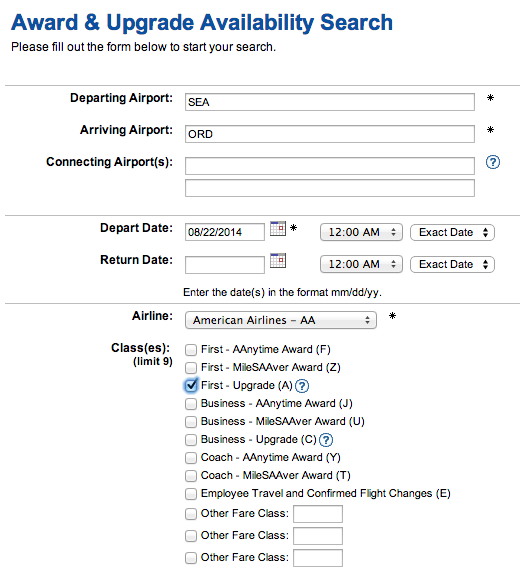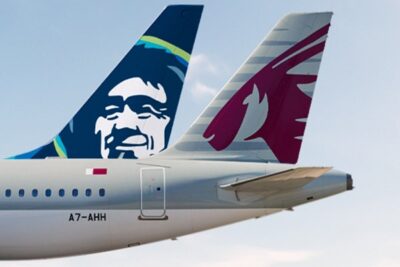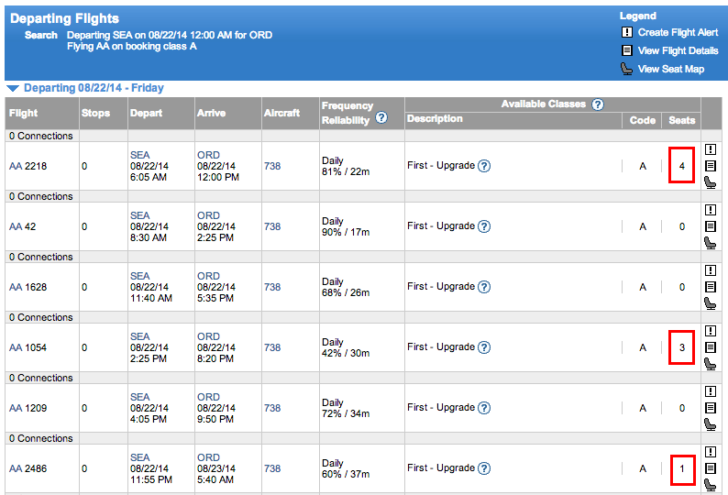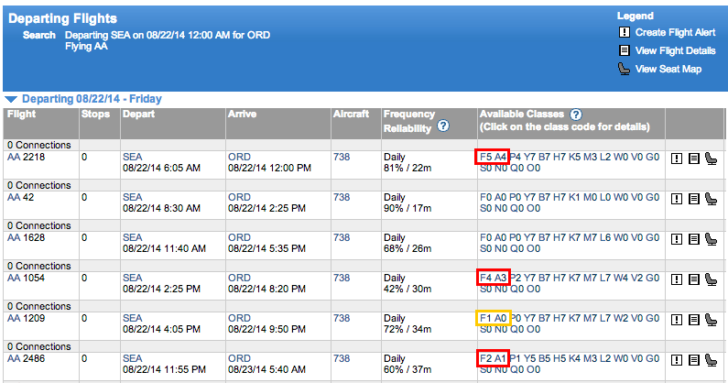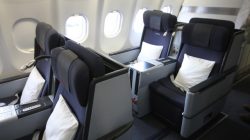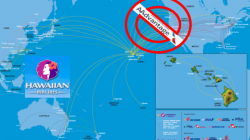I’m still slowly writing up some of the topics I discussed at the FTU Advanced in Chicago last month. Among them were using ExpertFlyer to search for (or at least estimate) upgrade availability on American Airlines. Some recent posts:
I used American as an example because United Airlines no longer displays upgrade inventory on ExpertFlyer. They’ve actually killed a number of good tools for searching for upgrade availability — with some justification, depending on your perspective — but at least they do permit you to search for availability on their own site by activating Expert Mode. Later this week I’ll also take a look at searching for upgrade space on Alaska Airlines.
Like traditional booking classes for revenue and award flights, upgrades have their own inventory bucket denoted by a letter: “A” is used for first class upgrades on two-class domestic flights and “C” is used for business class upgrades on two- and three-class international flights. You’ll want to look for “A” inventory if you are trying to score a domestic upgrade, which may require 500-mile stickers (you can buy more for $30 each) but are complimentary for Executive Platinum members. Look for “C” inventory if you want to use an eVIP systemwide upgrade on an international flight.
Let’s say I want to go to Chicago next week. I click on the Awards & Upgrades tab on ExpertFlyer and then choose American Airlines as my carrier.
There are several flights that day, three of which have upgrade inventory available. If I were to redeem miles or a SWU for it, I could confirm the upgrade immediately. But if I am relying on a domestic upgrade or 500-mile stickers, then I’ll still have to wait until the upgrade window opens for my elite tier. Knowing that upgrades are available now makes me feel more confident one will be available later.
Inventory could always go down if other people buy first class tickets or confirm their upgrades before me. Inventory could also increase as people change their plans, aircraft are swapped in with a larger first class cabin, or American becomes less sure that people will actually pay for those first class seats. To get a sense of how many first class upgrades might become available, take a look at the first class seats that remain for sale. DO NOT look at the number of open seat assignments on the first class seat map; just because someone bought a ticket doesn’t mean he or she actually selected a seat.
To do this, go to the Flight Availability tab on Expert Flyer and do a search for the same route on the same day. In fact, you could do this from the start. American’s “A” upgrade inventory shows up with all the other fare classes.
You’ll see that the upgrade inventory is still there for AA2218, AA1054, and AA2486 (in red). All the first class seats (booking class “F”) are already sold out for AA42 and AA1628, so it’s no surprise there are no upgrades, either. But Notice AA1209 (in orange). There is still one first class seat for sale, but it’s not available for upgrade. On the other flights in red, the number of seats for upgrade are one less than the number of seats for sale. American seems to think it can sell at least one more seat on each of these flights — but don’t think that “A” inventory will always be one less than “F.” This is just coincidence.
How Can I Increase My Upgrade Success?
The number one rule of getting an upgrade on American Airlines, in my experience, is that you have to request it. This isn’t really as obvious as it sounds. I never had to request an upgrade on United Airlines, so I’m not in the habit. If you book your flight on American’s website, the prompt is usually easy to spot. But recently I booked some business trips through my company’s travel agent and forgot to call American to request my upgrade. I ended up flying coach because I didn’t make the request until I checked in the day before. (I kept thinking, “This is odd, I’m usually upgraded several days in advance. What’s going on?”)
It didn’t help that this was booked at the last minute, and American uses the time of request as part of its upgrade priority system. In order of importance, upgrades are processed with the following factors in mind:
- Elite status
- Connecting passengers (vs. non-stop)
- Booking class (full-fare Y/B tickets get priority over other booking classes)
- Time of upgrade request (when did you check the box?)
For many people, elite status is the key component. Executive Platinum members will get upgraded before Platinum or Gold members. But that still means there could be jockeying for position within an elite tier. It’s important even for Executive Platinum members on elite-heavy flights.
The bias in favor of connecting passengers bears some further explanation. This basically means you and another passenger could be equally ranked for a flight from Seattle to Chicago. But if I’m continuing on from Chicago to London, my upgrade will clear first. Even if I’m continuing on to some minor airport in the U.S., my upgrade will clear first.
Related to this, though not quite the same in meaning, anyone can increase their upgrade chances by including an extra connection in what would otherwise by a non-stop flight. Consider travel from San Francisco to Chicago. I could fly non-stop, or I could fly SFO–DFW–ORD. Besides earning more miles, I also stand a better chance at an upgrade that could make the longer travel time worthwhile. My guess is that I am dealing with less competition with other elites in Dallas because its central location naturally makes it more difficult to earn top-tier elite status. Furthermore, most people don’t have the free time to make a connection and would prefer to fly SFO-ORD. Finally, both SFO-DFW and DFW-ORD are shorter and therefore less attractive uses of an upgrade with miles or a SWU, which would take priority over a complimentary elite upgrade.
In the first example, American’s rules explicitly say that my upgrade on SFO-DFW is more likely because I’m continuing on to ORD while another passenger is terminating in DFW. In the second example, I’m thinking strategically that I have less competition for upgrades from SFO to ORD if I add a connection in DFW vs. others who travel non-stop, though the upgrades I receive will be on different flights than my non-stop competitors.
It seems odd sometimes that American thinks it is necessary to further increase my odds when I choose a connection that, by itself, ought to have some benefit. But it’s not a “choice” for some itineraries, and I guess it’s reasonable compensation for those who have to spend more time cooped up in a metal tube, whether traveling to Amarillo or Amsterdam.

